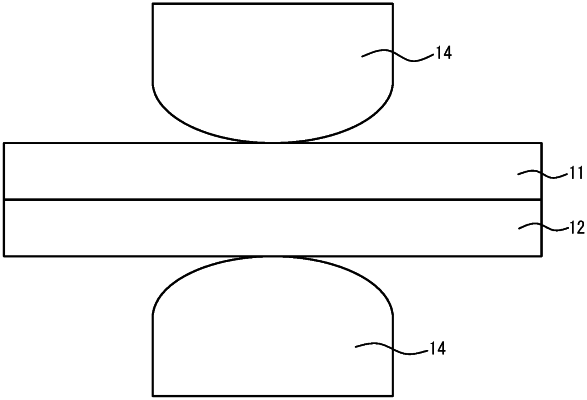| CPC B23K 11/115 (2013.01) [B23K 11/257 (2013.01)] | 11 Claims |

|
1. A resistance spot welding method of squeezing, by a pair of electrodes, parts to be welded which are a plurality of overlapping metal sheets, and passing a current while applying an electrode force to join the parts to be welded, the resistance spot welding method comprising:
performing test welding; and
performing actual welding after the test welding,
wherein the test welding is performed under each of two or more welding conditions,
in the test welding, for each of the welding conditions, a parameter relating to the electrode force from when electrode force application to the parts to be welded starts to when the electrode force reaches a preset value is stored before start of current passage, and a time variation curve of an instantaneous amount of heat generated per unit volume and a cumulative amount of heat generated per unit volume that are calculated from an electrical property between the electrodes in forming a nugget having a diameter within a predetermined range by performing current passage by constant current control are stored, and
in the actual welding, electrode force application to the parts to be welded is performed under each of the same conditions as in the test welding before start of current passage, the parameter relating to the electrode force from when the electrode force application starts to when the electrode force reaches a preset value and the parameter relating to the electrode force stored in the test welding are compared to determine a difference therebetween for each of the welding conditions of the test welding, and the time variation curve of the instantaneous amount of heat generated per unit volume and the cumulative amount of heat generated per unit volume in the test welding that are stored for the welding condition corresponding to a smallest difference are set as a target in the actual welding; and
the actual welding is performed by adaptive control welding to control a current passage amount according to the target; and
in the test welding, at least one of the welding conditions is that welding is performed in a simulated state of a disturbance, and at least another one of the welding conditions is that welding is performed in a state of no disturbance.
|